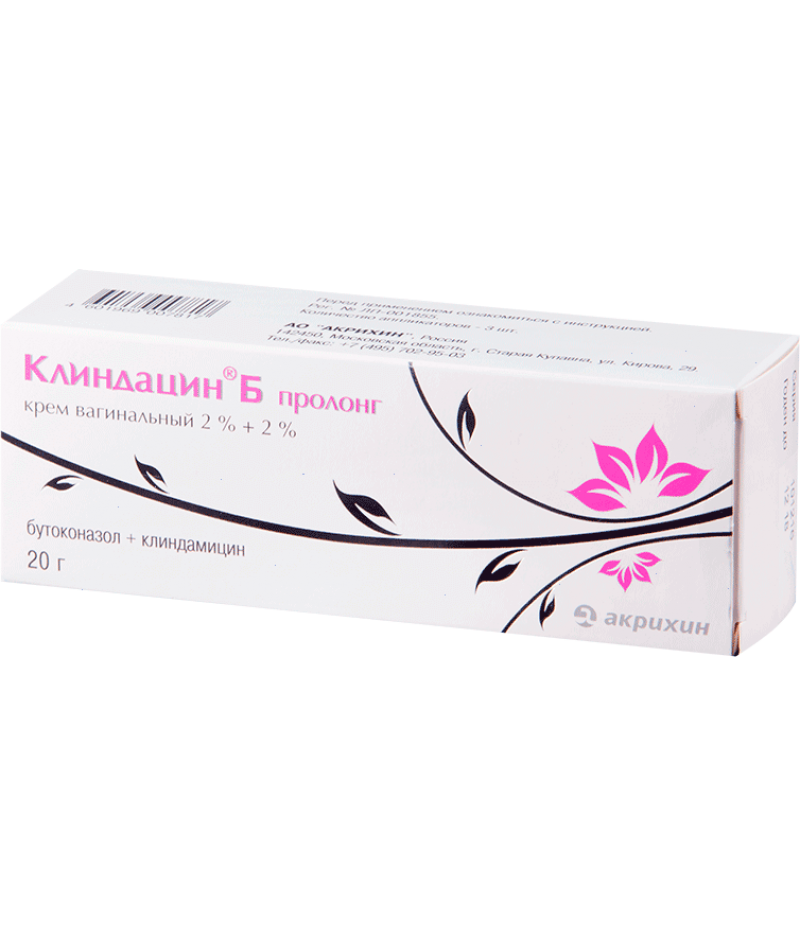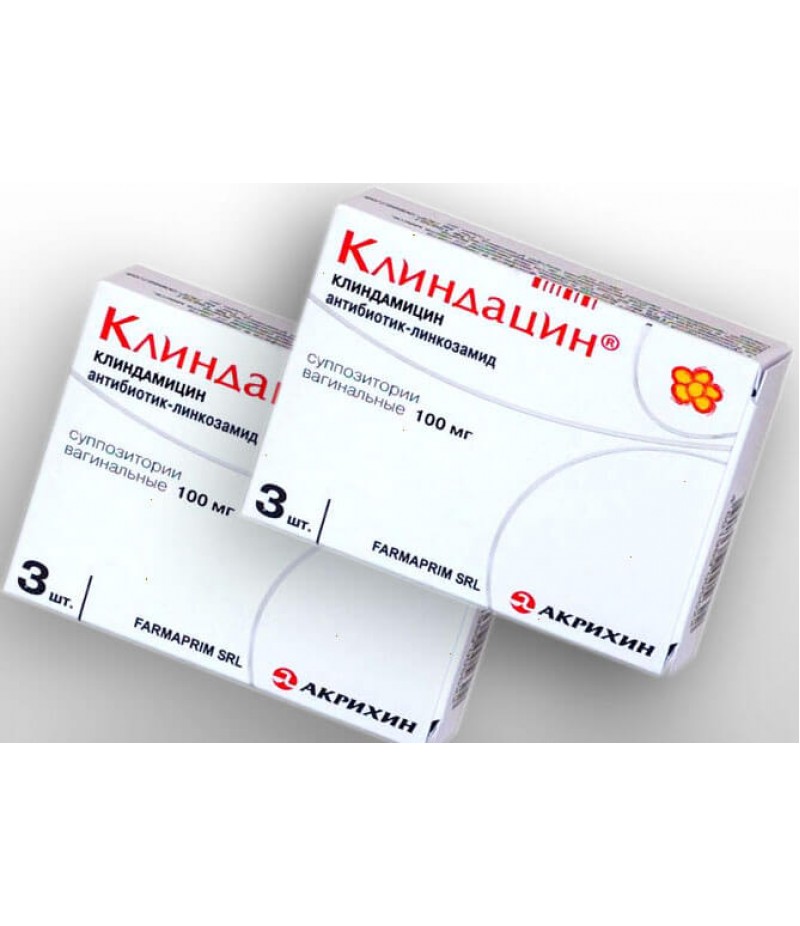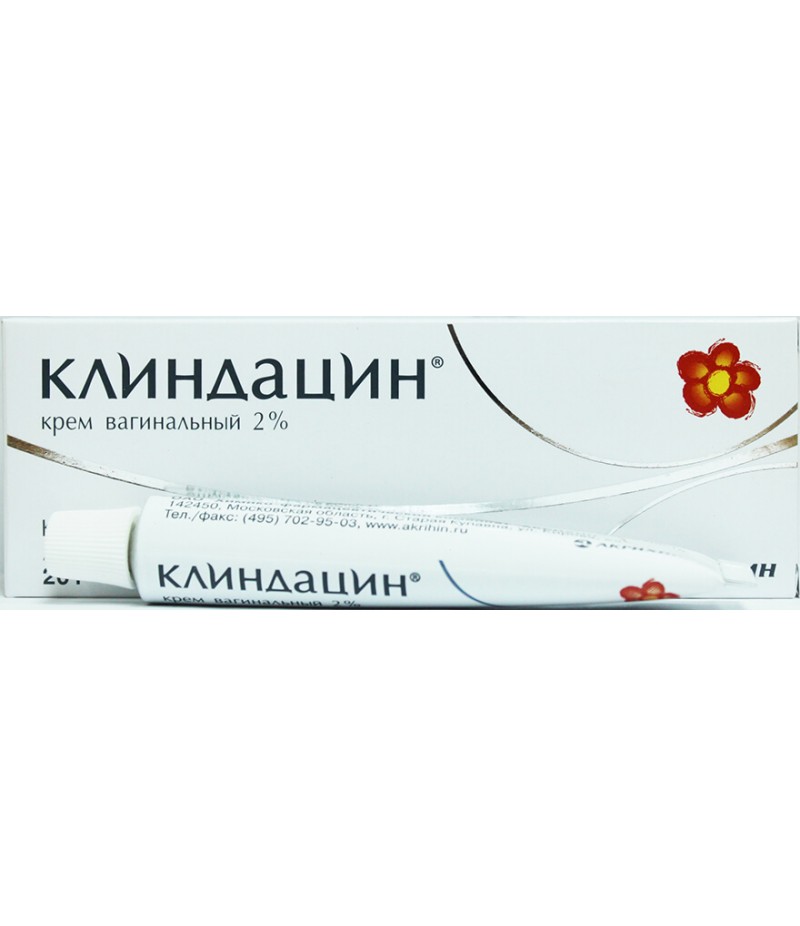Clindacin B cream 2% + 2% 20gr
- $27.19
- 3 or more $26.99
- Availability:In Stock
Clindacin B instruction for useYou can buy Clindacin B on this pageRelease form, composition and packagingCream vaginal 2% + 2% from almost white to white with a grayish shade of color, with a specific smell.100 gbutoconazole nitr..
Tags: cream
Clindacin B instruction for use
You can buy Clindacin B on this page
Release form, composition and packaging
Cream vaginal 2% + 2% from almost white to white with a grayish shade of color, with a specific smell.
100 g
butoconazole nitrate (in terms of 100% substance) 2 g
clindamycin phosphate (in terms of 100% substance) 2.376 mg,
which corresponds to the content of clindamycin 2 g
Excipients: preservative Euxyl PE 9010 (phenoxyethanol 90%, ethylhexylglycerol 10%) - 0.5 g, equivalent to 0.45 g of phenoxyethanol, propylene glycol - 5 g, isopropyl myristate - 8 g, macrogol cetostearate (macrogol 20-a new heart of the heart, and a new heart of the world, and 34-year-old cephalic acid) - 8 g, macrogol cetostearate (macrogol-20 cetosthearymylistorate - 8 g, macrogol cetostearate (Macrogol-20 cetosthearymyliste), and 8 mg, macrogol cetostearate (aerial), and the isoropyl myristate is a new figure and you can use the same figure and you can get a new figure and you can use a new, new, non-metric, glycerol-8 g, 300 g of cetostearate (macrogol-20 ceto-stearate myristate); alcohol (cetyl alcohol 60%, stearyl alcohol 40%) - 6 g, hydroxypropyl dicarmal phosphate - 8 g, sodium hydroxide - 0.26 g, purified water - up to 100 g
pharmachologic effect
Pharmacodynamics
Butoconazole, an imidazole derivative, has fungicidal activity against the fungi Candida, Trichophyton, Microsporum, Epidermaphyton, and some gram-positive bacteria. Most effective for candida.
By blocking the formation of ergosterol from lanosterol in the cell membrane, the membrane permeability increases, which leads to the lysis of the fungus cell.
Clindamycin is a bacteriostatic antibiotic from the group of lincosamides, has a broad spectrum of activity, binds to the 50S subunit of the ribosomal membrane and inhibits protein synthesis in the microbial cell. In respect of a number of gram-positive cocci possible bactericidal action.
The following microorganisms that cause bacterial vaginosis are sensitive to clindamycin in vitro: Gardnerella vaginalis, Mobiluncus spp., Mycoplasma hominis, Bacteroides spp., Peptostreptococcus spp.
Hydrophilic cream base provides the preparation with a gel-like consistency at a temperature of 35-40 ° C. When intravaginal application of the cream does not melt, so that the active substances are on the mucous membrane of the vagina for 1-3 days.
There is cross-resistance between clindamycin and lincomycin.
Pharmacokinetics
Butoconazole
When administered intravaginally, about 1.7% of the administered dose of butoconazole is absorbed. Cmax in the blood plasma of butoconazole is reached after 13 hours and is 2-18.6 ng / ml. Butoconazole undergoes intensive metabolism, partially excreted by the kidneys and intestines.
Clindamycin
Suction
After applying clindamycin intravaginally in a dose of 100 mg / day once (as 2% clindamycin phosphate cream) for 7 days Cm of clindamycin in plasma is reached after 10 hours (4-24 hours) and averages 18 ng on day 1 / ml (4-47 ng / ml), and on the 7th day - 25 ng / ml (6-61 ng / ml), while systemic absorption is about 4% (0.6-11%) of the administered dose.
In women with bacterial vaginosis, with a similar dosing regimen, about 4% of clindamycin is exposed to systemic absorption (with a smaller spread of 2-8%), Cmax is achieved 14 hours (4-24 hours) after administration and averages 13 ng / ml on the first day (6-34 ng / ml), and on the 7th day - 16 ng / ml (7-26 ng / ml).
Systemic effects of clindamycin when intravaginal use is less pronounced than with the introduction inside or in / in.
Removal
T1 / 2 is 1.5-2.6 hours. After repeated intravaginal administration, clindamycin almost does not accumulate.
Pharmacokinetics in Special Patient Groups
In clinical studies of clindamycin 2% vaginal cream, there were an insufficient number of patients aged 65 years and older to assess the difference in clinical response to therapy between this age group and younger patients. In available reports from clinical experience, there was no difference in the response of elderly patients and younger patients.
Indications
- bacterial, fungal and mixed vaginosis caused by microorganisms sensitive to Clindacin B.
Contraindications for Clindacin B
- hypersensitivity to clindamycin, lincomycin, butoconazole, or any component of Clindacin B;
- Crohn's disease;
- inflammatory bowel disease (Crohn's disease, ulcerative, pseudomembranous and antibiotic-associated colitis (including a history);
- age up to 18 years;
With care: allergic diseases, simultaneous taking of muscle relaxants.
Dosage of Clindacin B
Enter intravaginally using an applicator, 1 time / day, preferably before bedtime.
The recommended dose is 1 full applicator (5 g of cream, which corresponds to 100 mg of butoconazole nitrate and 100 mg of clindamycin).
The course of treatment is daily for 3 days.
Instructions for use
Disposable applicators attached to the package are designed for the correct introduction of the cream into the vagina.
1. Remove the cap of the cream tube. Screw the plastic applicator onto the threaded neck of the tube.
2. Squeezing the tube from the opposite end, gently squeeze the cream into the applicator. The applicator piston moves independently as the required volume is filled. The applicator is full when its piston reaches the stop.
3. Lying on your back, take the applicator horizontally and insert it into the vagina as far as possible, but so as not to cause discomfort.
4. Slowly press the piston until it stops.
5. Carefully remove the applicator from the vagina and discard it.
Side effects
Clindacin B is usually well tolerated, but irritation is possible at the injection site, burning, itching, soreness and swelling of the vaginal mucosa, pain / cramps in the lower abdomen, the development of allergic reactions.
The safety of clindamycin vaginal cream was assessed in both non-pregnant patients and in patients in the second and third trimesters of pregnancy.
Adverse drug reactions reported with clindamycin, vaginal cream
Determination of the frequency of undesirable reactions: very often (≥1 / 10), often (from ≥1 / 100 to <1/10), infrequently (from ≥1 / 1000 to <1/100), rarely (from ≥1 / 10 000 up to <1/1000), very rarely (<1/10 000), frequency unknown (impossible to estimate based on available data).
Infectious and parasitic diseases: often - fungal infections caused by Candida fungi; infrequently - bacterial infections; frequency is unknown - skin candidiasis.
On the part of the immune system: infrequently - hypersensitivity.
On the part of the endocrine system: the frequency is unknown - hyperthyroidism.
On the part of the nervous system: often - headache, dizziness, dysgeusia.
On the part of the organ of hearing and vestibular apparatus: infrequently - vertigo.
Respiratory system disorders: often - upper respiratory tract infections; infrequently - nosebleeds.
On the part of the digestive tract: often - abdominal pain, constipation, diarrhea, nausea, vomiting; infrequently - abdominal distension, flatulence, bad breath; frequency is unknown - pseudomembranous colitis *, gastrointestinal disorders, dyspepsia.
On the part of the skin and subcutaneous tissues: often - itchy skin, rash; infrequently - urticaria, erythema; frequency is unknown - makulo-papular rash.
On the part of the musculoskeletal system: often - back pain.
On the part of the kidneys and urinary tract: often - urinary tract infections, glycosuria, proteinuria; infrequently - dysuria.
Pregnancy, postpartum and perinatal conditions: often - abnormal birth.
On the part of the genital organs and the mammary gland: very often - vulvovaginal candidiasis; often - vulvovaginitis, vulvovaginal disorders, menstrual disorders, vulvovaginal pain, metrorrhagia, vaginal discharge; infrequently - Trichomonas vulvovaginitis, vaginal infections, pain in the pelvis; frequency unknown - endometriosis.
Common disorders and reactions at the site of reference: frequency unknown - inflammation, pain.
Data from laboratory and instrumental examinations: infrequently - deviation of microbiological test results from the norm.
* Adverse drug reactions identified in the post-registration period.
Overdose
With intravaginal use of the drug overdose is not installed. Possible absorption of clindamycin in quantities sufficient for the development of systemic reactions. Accidental ingestion of Clindacin B in the gastrointestinal tract can also cause systemic effects, similar to those that occur after ingestion of clindamycin in therapeutic doses. Possible systemic side effects include diarrhea, hemorrhagic diarrhea, including pseudomembranous colitis (see the “Side Effects” and “Special Instructions” sections).
Treatment: symptomatic and supportive.
Drug interaction
There is cross-resistance between clindamycin and lincomycin.
In vitro antagonism between clindamycin and erythromycin has been demonstrated.
It is established that clindamycin in systemic use violates neuromuscular transmission and, therefore, may enhance the action of peripheral muscle relaxants, so the drug should be used with caution in patients receiving drugs in this group.
Combined use with other drugs for intravaginal administration is not recommended.
Incompatible with solutions containing the complex of vitamins of group B, aminoglycosides, ampicillin, calcium gluconate and magnesium sulfate.
special instructions
Before prescribing, Trichomonas vaginalis, Chlamidia trachomatis, Neisseria gonorrhoeae and Herpes simplex virus, often causing vulvovaginitis, should be excluded using appropriate laboratory methods.
Intravaginal use of clindamycin can lead to increased growth of insensitive microorganisms, especially yeast-like fungi.
The use of clindamycin (like almost all antibiotics) orally or parenterally is associated with the development of severe diarrhea and in some cases pseudomembranous colitis. With the development of severe or prolonged diarrhea, Clindacin B should be discontinued and, if necessary, carry out appropriate diagnostic and therapeutic measures. Patients should be warned that during drug therapy should not engage in sexual intercourse.
Vaginal cream is not recommended to be used simultaneously with other intravaginal drugs.
Do not use the drug during menstruation. It is necessary to postpone the start of therapy until the end of menstruation.
Clindacin B contains components that can reduce the strength of latex or rubber products, therefore the use of condoms, vaginal contraceptive diaphragms and other latex products for intravaginal use during drug therapy and for 72 hours after use is not recommended.
If the clinical signs of infection persist after the completion of treatment, a microbiological examination should be repeated to identify the causative agent and confirm the diagnosis.
Cetostearyl alcohol contained in the preparation can cause local skin reactions (rash, contact dermatitis). The appearance of irritation of the mucous membrane of the vagina or painful sensations serves as an indication for stopping the treatment.
Influence on ability to drive motor transport and control mechanisms
There is no reason to believe that the use of the drug Clindacin B Prolong vaginal cream may affect the ability to drive a car and control mechanisms.
Pregnancy and lactation
Use of Clindacin B during pregnancy and lactation is possible only if the potential benefit to the mother outweighs the risk to the fetus or child.
Adequate controlled studies on the use of the drug in the first trimester of pregnancy have not been conducted, therefore, Clindacin B prolong can be prescribed to women in the first trimester of pregnancy only in absolute terms, i.e. when the potential benefit of drug therapy to the mother outweighs the potential risk to the fetus. In animal studies with the introduction of clindamycin s / c or inside, no negative effects on the fetus were found, except in cases of taking Clindacin B in doses that are toxic to the mother. With the use of clindamycin intravaginally in the II or III trimester of pregnancy, there was no increase in the frequency of congenital abnormalities of the fetus. Abnormal delivery occurred in 1.1% of women compared to 0.5% in the placebo group, if clindamycin vaginal cream was used in the second trimester for 7 days. The use of the drug in the II-III trimester of pregnancy is possible if the potential benefit to the mother exceeds the risk to the fetus.
It is not known whether clindamycin is excreted in breast milk after intravaginal use. Clindamycin is found in breast milk after oral or parenteral administration, so during breastfeeding, you should either discontinue Clindacin B or stop breastfeeding, given the degree of importance of the drug to the mother.
Use in childhood
Contraindicated in children and adolescents under 18 years of age.
Pharmacy sales terms
You can buy Clindacin B without a prescription.
Terms and conditions of storage
Clindacin B should be stored out of reach of children at a temperature of 15 ° to 25 ° C. Shelf life - 2 years. Do not use after the expiration date.



